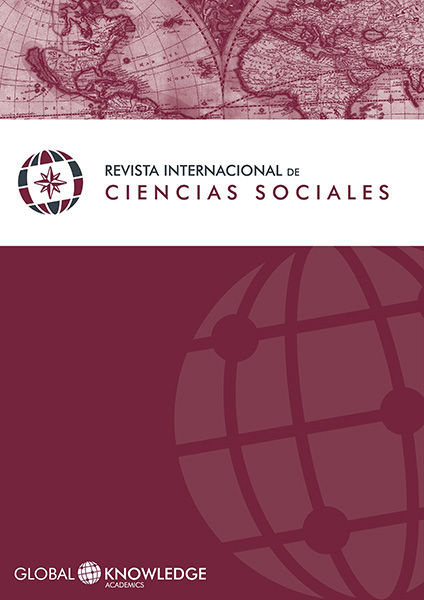The Commercial Exchange of Mexican Manufacturig
DOI:
https://doi.org/10.37467/gka-revsocial.v8.2090Keywords:
Mexico, China, Trade, Manufacturing, ExportsAbstract
In this paper I will explain the case of China, with two important points. The first is how this Asian country exports to United States. That have helped a reduction in mexican manufacturing exports. The second is the presence of a growing trade deficit of Mexico with the Chinese economy. I present the behaviour of the trade balance. The chains of value and importance by sectors are also delineated. Finally, I explain the intraindustry trade through the use of index Grubel and Lloyd.
Downloads
Global Statistics ℹ️
|
538
Views
|
385
Downloads
|
|
923
Total
|
|
References
ALAVEZ, MARIO, (2017). <>. Revista Manufactura, 30 de junio.
http://www.manufactura.mx/industria/2017/06/30/mexico-debe-diversificar-mas-sus-exportaciones-a-eu#
CEPAL (2015). Panorama de la inserción internacional de América Latina y el Caribe. Santiago de Chile. Naciones Unidas.
CEPAL (2016). Panorama de la inserción internacional de América Latina y el Caribe. Santiago de Chile. Naciones Unidas.
DGIPAT (Dirección General de Industrias Pesadas y de Alta Tecnología, 2012). Industria aeronáutica en México. México: Secretaría de Economía, marzo.
DURÁN LIMA, J.E., M. Álvarez (2011). Manual de comercio exterior y política comercial: nociones básicas, clasificaciones e indicadores de posición y dinamismo. Documentos de Proyecto, núm. 430 (LC/W.430). Santiago de Chile: Comisión Económica para América Latina y el Caribe (CEPAL).
DUSSEL, P., K.P. Gallangher (2013). «El huésped no invitado del TLCAN: China y la desintegración del comercio en América del Norte». Revista CEPAL, núm. 110 (LC/G.2572-P). Santiago de Chile: Comisión Económica para América Latina y el Caribe (CEPAL). Agosto. DOI: https://doi.org/10.18356/cb28130c-es
GALLAGHER, K., R.Porzecansk (2008). «China matters: China’s economic impact in Latin America». Latin American ResearchReview, 43(1). DOI: https://doi.org/10.1353/lar.2008.0012
GARRIDO, C. (2010), «La inserción de México, Centro América y el Caribe en las cadenas globales de valor». La inserción de América Latina en las cadenas globales de valor, Serie Red MERCOSUR,
GÓMEZ TÁMEZ (2015).» Los problemas del comercio internacional de México». El Financiero, 28 de septiembre.
http://www.elfinanciero.com.mx/opinion/los-problemas-del-comercio-internacional-de-mexico.html
FUJII, G., R. Cervantes M. (2013). «México: valor agregado en las exportaciones manufactureras». Revista CEPAL, núm. 109. (LC/G.2556-P). Santiago de Chile: Comisión Económica para América Latina y el Caribe (CEPAL). Abril. DOI: https://doi.org/10.18356/475843a8-es
GONZÁLEZ, Susana. (2018) “México, EU y Canadá firmarán T-MEC en Argentina, el día 30: Guajardo”, La Jornada, 20 de noviembre. Disponible en: http://www.jornada.com.mx/ultimas/2018/11/20/ministros-firmaran-t-mec-en-argentina-anuncio-guajardo-3166.html
HELPMAN, E., P. Krugman (1989).Trade policy and market structure. Cambridge: MITPress.
HERNÁNDEZ, R. (2012). «Economic liberalization and trade relations between Mexico and China». Journal of CurrentChineseAffairs, 41(1). DOI: https://doi.org/10.1177/186810261204100103
MENDOZA COTA, Jorge(2015). «El comercio México-China: su importancia e impacto en la economía mexicana» .Análisis, núm. 69, septiembre- diciembre. http://www.mexicoylacuencadelpacifico.cucsh.udg.mx/sites/default/files/El-comercio-Mexico-China.pdf
KEHOE, T.J. Kim. (2010). «Why have Economic Reforms in Mexico not generated growth? » Working.Paper Series, núm.16580. National Bureau of Economic Research. DOI: https://doi.org/10.3386/w16580
PROMÉXICO (2016). La clave del comercio exterior. 8 de agosto. http://www.promexico.gob.mx/negocios-internacionales/la-clave-del-comercio-exterior.html
ODDONE, N. (2016). «Exportaciones: aumentar el valor agregado como vía para evitar la reprimarización». La Nación, diciembre15. http://www.lanacion.com.ar/1966990-exportaciones-aumentar-el-valor-agregado-como-via-para-evitar-la-reprimarizacion
PETTIS, M. (2017). «El efecto positivo de México sobre la balanza comercial de EEUU». El País, 13 de febrero, p.37.
REDACCIÓN. (2018) “3 diferencias entre el TCLAN y el T-MEC, el nuevo acuerdo comercial entre Estados Unidos, México y Canadá”, BBC News Mundo, 17 de octubre. Disponible en: https://www.bbc.com/mundo/noticias-45708029
ROSALES, O. (2015). Globalización, integración y comercio inclusivo en América Latina.
http://repositorio.cepal.org/bitstream/handle/11362/38952/1/S1500632_es.pdf
UNCTAD (2013). Informe sobre las inversiones en el mundo.
UNCTAD (2013) Las cadenas de valor mundiales y el desarrollo: inversión y comercio de valor añadido
http://unctad.org/es/paginas/PressRelease.aspx?OriginalVersionID=113
Downloads
Published
How to Cite
Issue
Section
License
Those authors who publish in this journal accept the following terms:
-
Authors retain copyright.
-
Authors transfer to the journal the right of first publication. The journal also owns the publishing rights.
-
All published contents are governed by an Attribution-NoDerivatives 4.0 International License.
Access the informative version and legal text of the license. By virtue of this, third parties are allowed to use what is published as long as they mention the authorship of the work and the first publication in this journal. If you transform the material, you may not distribute the modified work. -
Authors may make other independent and additional contractual arrangements for non-exclusive distribution of the version of the article published in this journal (e.g., inclusion in an institutional repository or publication in a book) as long as they clearly indicate that the work was first published in this journal.
- Authors are allowed and recommended to publish their work on the Internet (for example on institutional and personal websites), following the publication of, and referencing the journal, as this could lead to constructive exchanges and a more extensive and quick circulation of published works (see The Effect of Open Access).













